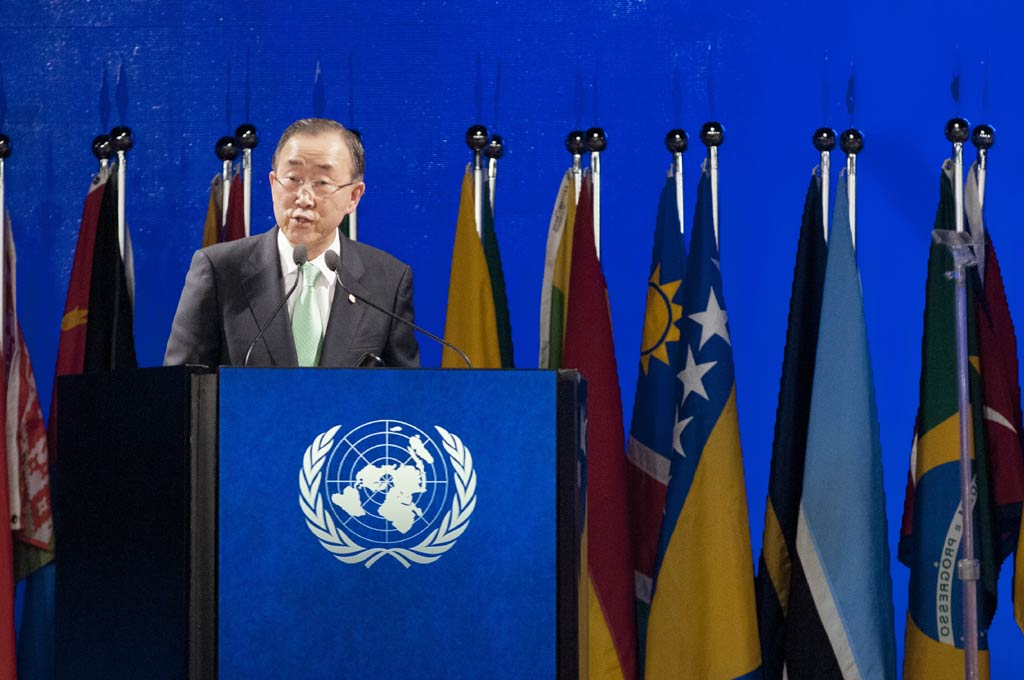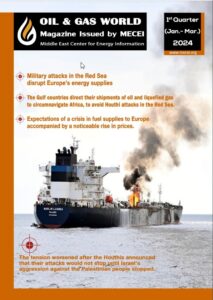- QatarEnergy selects Nakilat to own and operate 25 conventional LNG vessels
- The joint development of the Dorra field between Saudi Arabia and Kuwait is pending the demarcation of the border with Iran
- Minister of Energy reaffirms the UAE’s commitment to adopting clean energy and supporting the Paris Agreement
- The new Hassi Messaoud refinery enjoys the support of the government and President Tebboune
- Increasing electrical interconnection capacities to export electricity beyond borders
- Qatar Energy stops sending liquefied gas tankers through the Red Sea for security reasons
- The inauguration of the Duqm Refinery, the largest joint Gulf project in the refinery sector
- Saudi oil exports are faltering due to Houthi attacks on ships in the Red Sea and Gulf of Aden
- Algeria to host and chair the Gas Exporting Countries Forum summit (February 29 to March 2, 2024)
- Egypt Energy Conference and Exhibition 2024 gives a strong impetus to the global energy dialogue

At Rio+20, UN Secretary-General Ban Ki-moon highlighted Sustainable Energy for All

-More than 50 Governments from Africa, Asia, Latin America, and Small Islands Developing States have engaged with the initiative and are developing energy plans and programmes. The majority are from developing countries that have initiated or completed energy sector assessments and gap analyses, thus laying the groundwork to scale up action in priority areas, undertake strategic reforms where needed, and attract new investments and financial support.
-Businesses and investors have committed over $50 billion to achieve the initiative’s three objectives. Tens of billions of dollars have been committed by other key stakeholders – governments, multilateral development banks, international and civil society organizations – to catalyze action in support of the initiative.
-More than a billion people will benefit from Sustainable Energy for All’s public and private sector commitments. Most beneficiaries in developing countries will gain improved access to energy through grid extension and off-grid solutions, as well scaled-up renewable energy sources, increased investment and improved energy policies.
-Hundreds of actions and commitments are underway in support of Sustainable Energy for All’s three objectives, supported by businesses, donors, entrepreneurs, organizations, artists, and individual volunteers.
-Such numbers only tell part of the story emerging around Sustainable Energy for All. UN Secretary-General Ban Ki-moon is calling on all sectors of society to make commitments that help to achieve Sustainable Energy for All by 2030.

Climate changes in drives people from their homes
21 June 2012 – http://www.un.org
Climate change can play a role in driving people from their homes into areas of conflict and potentially across borders, according to a new United Nations report released today.
“Climate Change, Vulnerability and Human Mobility,” based on discussions with around 150 refugees and internally displaced people in Ethiopia and Uganda in 2011, is published by the Office of the UN High Commissioner for Refugees (UNHCR) and the UN University (UNU).
“This report confirms what we have been hearing for years from refugees,” said the High Commissioner for Refugees, António Guterres, who introduced the report while attending the UN Conference on Sustainable Development (Rio+20) in Rio de Janeiro, Brazil.
“They did everything they could to stay at home, but when their last crops failed, their livestock died, they had no option but to move; movement which often led them into greater harm’s way,” he stated.
Most of those interviewed for the report, which was produced with the support of the London School of Economics and BonnUniversity, were farmers and pastoralists from Eritrea, Somalia and eastern Sudan. They were asked questions about the extent to which climate change contributed to their decision to leave their homes, and, eventually, their countries.
Most refugees reported that leaving their homes was a last resort and their first displacement was temporary and to an area close to home, according to a news release on the report.
The majority fled their countries after the areas they moved to were affected by insecurity or a lethal combination of violence and drought. “Cross-border movement, as a direct response to climate change, was exceptional,” the news release noted.
While many refugees described disrupted rainfall patterns in the past decade, with longer and more severe droughts than in previous years, none cited these negative shifts in weather as a direct catalyst for violent conflict, according to the report.
Some did, however, speak about the scarcity of food and crops after severe drought as exacerbating pre-existing conflicts, persecution and repression.
While most people displaced solely as a result of extreme weather conditions stay within their national borders, those that cross international borders are not necessarily covered by the 1951 UN Refugee Convention – the treaty that forms the legal foundation on which UNHCR’s work is based.
The Convention, adopted to resolve the refugee problem in Europe after the Second World War, provides a definition of who qualifies as a refugee – a person with a well-founded fear of being persecuted for reasons of race, religion, nationality, membership of a particular social group or political opinion – and spells out the rights and obligations between host countries and refugees.
The Nansen Initiative, due to be formally launched in October 2012 by Norway and Switzerland, with the support of UNHCR and the Norwegian Refugee Council, aims to address this legal and protection gap for people displaced across borders owing to environmental change and extreme weather events.
“I am convinced that climate change will increasingly be a driver in worsening displacement crises in the world,” said Mr. Guterres. “It is very important for the world to come together to respond to this challenge.”










